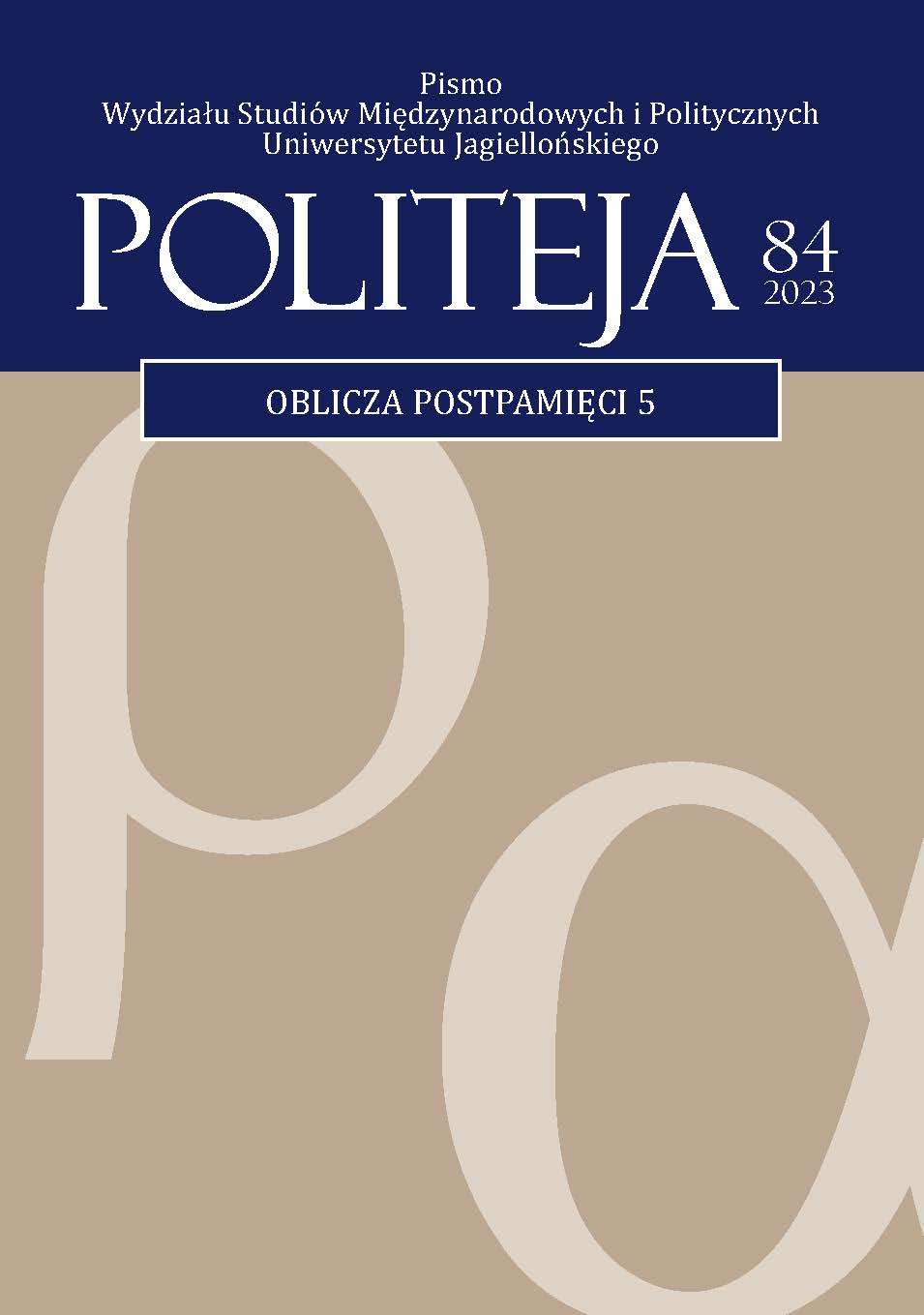W-drukowane
Specyfika pracy postpamięci w aranżacji graficznej Non omnis moriar Witolda Zaręby
DOI:
https://doi.org/10.12797/Politeja.20.2023.84.10Keywords:
postmemory, memory acts, counter-monument, graphic arrangement, The Great WarAbstract
IM-PRINTED: THE SPECIFICITY OF POST-MEMORY WORK IN WITOLD ZARĘBA’S GRAPHIC COMPOSITION NON OMNIS MORIAR
The text provides an analysis of Witold Zaręba’s graphic composition Non omnis moriar. This artistic project draws upon photographs spanning the years 1860 to 1918, postcards used during wartime, or preserved fragments of Austro- Hungarian army uniforms. Through these elements, the artist weaves a visual narrative about the world extending between a soldier’s duty and the compassion exhibited by the nursing sisters attending to the wounded on the World War I fronts. The analysis of Zaręba’s project is approached from three perspectives: a particular interpretation of Marianne Hirsch’s concept of postmemory, the notion of “memory acts” as proposed by Constantine de Saint-Laurent, and the idea of counter-monument as expounded by James E. Young. The intended outcome of this analysis is to address the question of how an artist assumes the role of an “heir” while simultaneously becoming a “worker of memory.” Furthermore, the study seeks to identify an alternative approach to commemoration that deviates from the prevalent forms of monumentalized remembrance observed within public space.
Downloads
References
Eksteins M., Święto wiosny. Wielka Wojna i narodziny nowego wieku, przeł. K. Rabińska, Warszawa 1996.
Hirsch M., Żałoba i postpamięć, przeł. K. Bojarska, [w:] Teoria wiedzy o przeszłości na tle współczesnej humanistyki. Antologia, red. E. Domańska, Poznań 2010, s. 254.
Karbońska J., „Jeśli my zapomnimy, kto będzie pamiętał?” Dzieło sztuki jako manifestacja postpamięci, „Politeja” 2015, nr 35, s. 106-108.
Rothberg M., Multidirectional Memory. Remembering the Holocaust in the Age of Decolonization, Stanford (CA) 2009.
de Saint-Laurent C., Memory Acts: A Theory for the Study of Collective Memory in Everyday Life, „Journal of Constructivist Psychology” 2017, vol. 31, no. 2, s. 160, https://doi.org/10.1080/10720537.2016.1271375. DOI: https://doi.org/10.1080/10720537.2016.1271375
Sieroń-Galusek D., Galusek Ł., Pogranicze. O odradzaniu się kultury, Wrocław 2012.
Wolff-Powęska A., Pamięć wyzwolona. Pamięć zniewolona. Kultura historyczna w procesie transformacji, „Politeja” 2017, nr 47, s. 8.
Young J.E., Memory and Counter-Memory, „Harvard Design Magazine” 1999, no. 9, s. 1-2.
Zaręba W., Non omnis moriar, Częstochowa 2017.
Downloads
Published
Issue
Section
License

This work is licensed under a Creative Commons Attribution-NonCommercial-NoDerivatives 4.0 International License.






